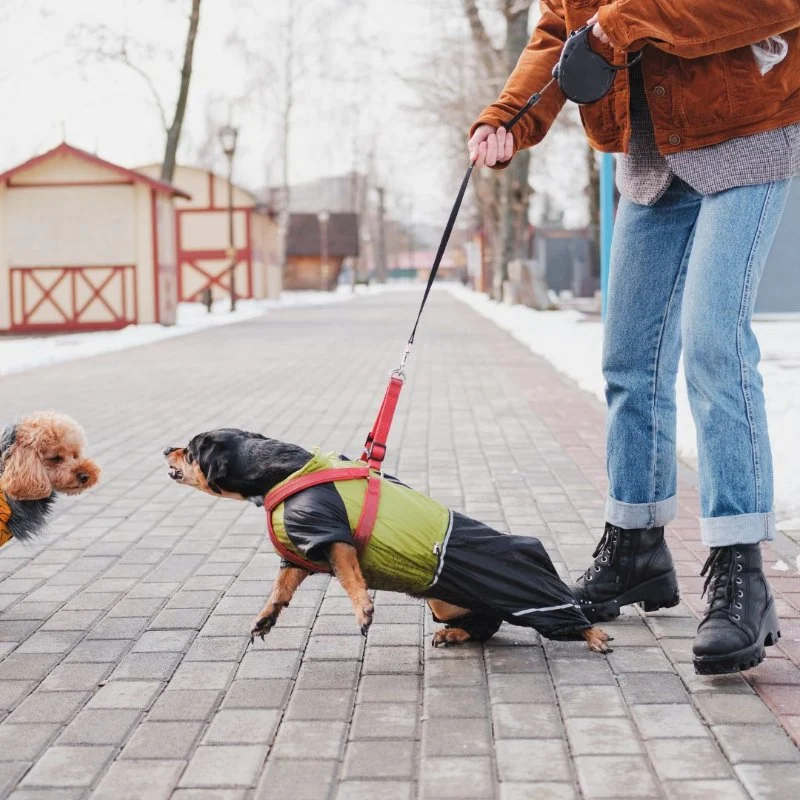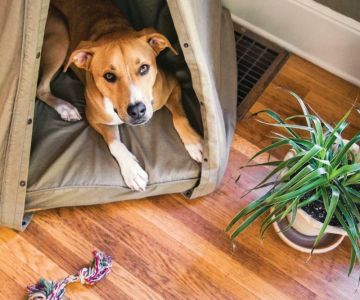
Leash Pulling in Dogs: Causes & Effective Correction Techniques
- 1 - Causes of Leash Pulling in Dogs
- 2 - How to Correct Leash Pulling in Dogs
- 3 - Effective Training Techniques to Stop Leash Pulling
- 4 - Case Study: Training a Dog to Stop Leash Pulling
1 - Causes of Leash Pulling in Dogs
Leash pulling is a common behavior issue many dog owners face. Understanding the root causes of this behavior can help you address the problem effectively. Let’s take a closer look at why dogs pull on their leashes.

The Animal Clinic, P.S.C.
LawrenceburgAnderson CountyKentucky
201 N Main St, Lawrenceburg, KY 40342, USA
1.1 Natural Instincts
Dogs are naturally curious creatures and often pull on their leashes to explore their surroundings. Whether they see a squirrel, smell a new scent, or simply want to move faster, leash pulling is sometimes an instinctive way for them to express their excitement or curiosity.
1.2 Lack of Training
For many dogs, leash pulling is simply a result of inadequate training. Without clear boundaries and commands, dogs learn to pull ahead because it allows them to reach their desired destination faster. Proper leash training can help teach dogs to walk politely by their owner's side.
1.3 Reinforcement of the Behavior
If a dog is consistently allowed to pull ahead during walks, they learn that pulling is an effective way to get what they want. This is known as positive reinforcement, where the dog’s behavior is rewarded with forward movement or access to something exciting, like a new smell or area to explore.
2 - How to Correct Leash Pulling in Dogs
Correcting leash pulling requires patience, consistency, and the right training techniques. Here are some methods to help reduce this behavior and teach your dog to walk calmly by your side.
2.1 Use Positive Reinforcement
One of the most effective ways to correct leash pulling is by using positive reinforcement. When your dog walks beside you without pulling, reward them with treats, praise, or a favorite toy. This will help your dog understand that walking politely on the leash is a behavior worth repeating.
2.2 Stop and Wait
Whenever your dog begins to pull on the leash, stop walking immediately. Stand still and wait until the leash becomes slack. Once the dog stops pulling and returns to your side, resume walking. This teaches your dog that pulling doesn’t get them what they want, while walking calmly does.
2.3 Change Direction
If your dog continues to pull, change direction quickly. By walking in the opposite direction, you force your dog to focus on you and adjust their behavior. This method is useful for teaching your dog to stay attentive to you during walks.
3 - Effective Training Techniques to Stop Leash Pulling
Training your dog to stop leash pulling takes time and consistency. Here are some techniques that can help make walks more enjoyable for both you and your dog:
3.1 The "Loose Leash" Method
The "loose leash" method is one of the most effective ways to teach a dog to walk without pulling. The goal is to keep the leash relaxed, without tension. If the leash is tight, it signals that the dog is pulling. If your dog pulls, stop moving until the leash becomes loose, and then proceed. This method encourages your dog to walk without pulling to avoid interruptions during the walk.
3.2 Use of No-Pull Harnesses
For some dogs, a no-pull harness can be a useful tool to help with leash training. These harnesses are designed to reduce pulling by applying gentle pressure to the dog’s chest when they pull, encouraging them to walk calmly without discomfort. While harnesses can be a great tool, they should be used in conjunction with training to ensure long-term success.
3.3 Keep Walks Engaging
Sometimes dogs pull because they are simply bored or distracted. To keep your dog engaged during walks, vary your walking route, incorporate training exercises, or let them stop and sniff every once in a while. This helps to keep their mind stimulated and reduces the urge to pull toward distractions.
4 - Case Study: Training a Dog to Stop Leash Pulling
Let’s take a look at a real-life case study of a dog named Bella, who struggled with leash pulling. Bella, a 2-year-old Border Collie, had a habit of pulling on the leash whenever she was excited or saw something interesting. Her owner, Jake, used the following techniques to help her improve:
4.1 Initial Challenges
When Jake first started training Bella, he found it difficult to get her to walk without pulling. She was very energetic, and whenever she saw a bird or another dog, she would yank the leash. Jake quickly realized that he needed to be more consistent and patient in his approach.
4.2 Applying the Loose Leash Method
Jake started using the loose leash method. Whenever Bella pulled, he would stop walking and wait for her to return to his side. After several sessions, Bella began to understand that pulling would result in a stop, while walking calmly beside Jake would allow her to continue exploring. Over time, Bella’s leash pulling reduced significantly.
4.3 The Final Outcome
After a few months of consistent training, Bella no longer pulled on the leash during walks. Jake also incorporated short training sessions during their walks, reinforcing positive behavior and rewarding Bella with treats. Bella now enjoys walking on a loose leash, and both Jake and Bella have more enjoyable walks together.
To make sure you have the right tools for training, visit Pet & Puppy for the best dog training products, including harnesses, leashes, and training treats that can help make your walks more enjoyable.








 1214 Central Store0.0 (0 reviews)
1214 Central Store0.0 (0 reviews) Burlington Pet Hospital4.0 (118 reviews)
Burlington Pet Hospital4.0 (118 reviews) ArkVets4.0 (426 reviews)
ArkVets4.0 (426 reviews) Hartzell Veterinary Service: Charles W. Hartzell, DVM and Sue Ann Hartzell, DVM4.0 (105 reviews)
Hartzell Veterinary Service: Charles W. Hartzell, DVM and Sue Ann Hartzell, DVM4.0 (105 reviews) Noah's Ark Animal Hospital4.0 (163 reviews)
Noah's Ark Animal Hospital4.0 (163 reviews) Jasper Pet Clinic4.0 (285 reviews)
Jasper Pet Clinic4.0 (285 reviews) Transitioning Training Methods as Pet Ages: Adapting Techniques for Senior Pets
Transitioning Training Methods as Pet Ages: Adapting Techniques for Senior Pets How to Read & Understand Pet Nutrition Labels for Your Pet's Health
How to Read & Understand Pet Nutrition Labels for Your Pet's Health How to Choose the Right Pet Supplement Brand: Essential Tips for Pet Owners
How to Choose the Right Pet Supplement Brand: Essential Tips for Pet Owners How Much Should You Feed Your Pet? Portion Guide by Age & Breed
How Much Should You Feed Your Pet? Portion Guide by Age & Breed How to Create a Pet Health Journal: Metrics to Track for Better Pet Care
How to Create a Pet Health Journal: Metrics to Track for Better Pet Care What Breed-Specific Health Issues You Should Be Aware Of
What Breed-Specific Health Issues You Should Be Aware Of